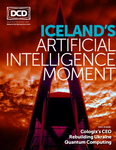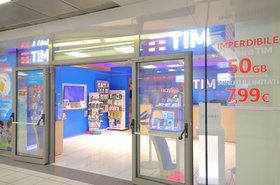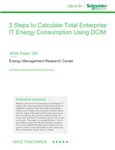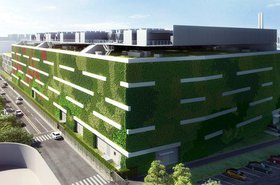I have worked in the data center industry for 24 years now, but last month I feel we have truly crossed a Rubicon - one that is positive and hugely impactful on our industry and society at large.
Officially, it sounds simple enough: the Climate Neutral Data Centre Pact (the Pact) delivered its first annual letter of certification against our Self-Regulatory Initiative (the Initiative), confirming that signatories have the processes and measures in place to collect and analyze the data required to be climate neutral by 2030.
The brainchild of the EUDCA and CISPE, the Pact was launched in January 2021 to demonstrate the data center industry’s capability and determination for true sustainability without external regulation. Since its launch, 88 operators and 28 trade associations (representing hundreds of ICT companies) have joined. Out of these operators, 67 signed up early enough to be able to report their status within the first 12 months, contributing to an impressive 95 percent certification rate for our self-regulated initiative in its inaugural year.
Those 67 certifications represent 67 executive signoffs, over EUR 1,000,000 invested in 3rd party audit services during Q2, and more than 500 person-days of process validation. This was finalized with the Pact Board submitting one public letter of commitment and validation to the European Union and on our website.
So what, 67 certifications?
Well, actually, there are three “so what’s”:
First, this public statement of commitment demonstrates a significant stride towards a sustainable future – there’s no turning back from here. As Europe evolves the definition of climate neutrality for the ICT market by 2030, the Pact’s 88 operator companies and 28 associations have wholeheartedly pledged to invest in and achieve the Initiative’s goals, which are already aggressive:
- Power Utilization Effectiveness (PUE) targets that will push green investments to ensure existing and future buildings operate as efficiently as possible;
- 100 percent renewable energy use;
- Aggressive water efficiency targets, especially in water-stressed locations;
- 100 percent asset and lifecycle management of all electrical equipment;
- 100 percent economic and feasibility analysis of heat reuse; and deployment where viable.
No other industry in Europe has gone this far in measurable commitments to the European Green Deal, and we have only just started. After 2025, the Pact will set targets for refurbishing and reusing electrical equipment, as well as heat reuse. Furthermore, the members of the Pact are engaged across the ICT space to address overall IT efficiency metrics, supporting enterprises and public sector bodies in measuring the effectiveness of their IT estate.
Second, one needs to consider the scale of this commitment: Europe’s commercial data center space consumes 6.6 gigawatts of electrical capacity, and the 88 signatories of the Pact, represent 75 percent of this capacity.
In just two years, this voluntary self-regulated program has become a significant contributor to addressing scope 1 and 2 emissions in the ICT market across Europe, including the power consumed by IT load in the data center.
To put this into perspective, the provisioned capacity of the Pact’s signatories accounts for approximately one percent of the total capacity of the European electricity grid. As the commercial data center industry aims to achieve 100 percent renewable energy usage by 2030, this is equivalent to 4 million households switching to renewable energy.
With 95 percent of current signatories certified, we have already achieved what regulations have barely begun to touch: near unanimous industry consensus to run data centers efficiently and sustainably. With such a majority of our market already signed up to the Initiative, it is only a short time before the whole industry will be compelled (by market image, by competition, and by customer demand) to sign up to these targets. In two years, this industry went from being presented a “Big Hairy Audacious Goal”* by the European Commission (i.e., to be climate neutral by 2030) to delivering to Europe a complete and executable solution.
Third, the knock-on benefits are manifest but several stand out:
IT Efficiency
The industry is now becoming fully transparent and accountable. Over the next few years, all IT users of scale will be able to see, measure and target the efficiency and sustainability of their whole IT estate.
The industry is both driving towards and being driven to deliver the data necessary for businesses, governments, and consumers to know the resource footprint of their entire digital world. While we may not be there yet, elements of measurement and standards have been initiated through initiatives like EU EED, EU Code of Conduct for data center Efficiency, SBTi, and CDP (Carbon Disclosure Project) as well as various ISO and EN standards. We are just a few critical puzzle pieces away from being able to provide a holistic IT Efficiency Metric.
But do not underestimate the value and importance of this new commitment to transparency. It will be transformative. Just as the data center has gone from an anonymous grey building in a trading estate to being a headline-grabbing topic across Europe, so will the concept of IT efficiency as we develop better metrics. Businesses and public bodies will invest in or kill applications and datasets on a value versus resource allocation basis.
Circular Economics
The bigger impact, which we can only see qualitatively today, is that of circularity. Achieving a circular economy sounds simple, but it demands a fundamental rethink of the traditional vertical supply chain of the industry. One area where this is becoming increasingly important is in societal systems like electricity, energy, water, electronics, and heat.
We are now working with utilities and their regulators to be an integral part of the system, rather than simply customers or suppliers.
Within the ICT market, there is a growing recognition of the interconnectedness of the entire lifecycle: from silicon production to the servers they power, and ultimately, the data centers where they are housed. Decisions made at each level now have significant impacts on others, leading us to approach the future with a shared perspective. Collaboration between all stakeholders is becoming increasingly crucial to achieve progress.
For example, the journey towards more standardized server elements, which will enhance the rate of equipment reuse and refurbishment, as well as the implementation of developments such as liquid cooling technology, requires unified efforts across the entire infrastructure market.
Economic spillover
But the most important part is the broader economic benefits. Just as US Defence research during the Cold War (under DARPA) created the network elements and protocols that underpin the World Wide Web and the Internet today, our work on sustainability will have positive effects across all industries.
Examples include innovations in HVAC and UPS systems, as well as energy storage and secondary energy systems. Here, the ICT market is both innovating and funding innovation in products and systems that will be commercially available and viable for all industries over the next three decades. The whole economy will access this innovation effectively “free of charge” since it is the ICT market underwriting the research, development, and commercialization of these sustainable products and systems.
Advances in ICT will also feedback into other industries. Many operators are integrating AI into their building management systems, enabling them to sense performance issues and make micro-adjustments to enhance efficiency. The same AI technology can be scaled up to optimize larger systems, spanning countrywide and regionwide networks. Additionally, computer modeling advancements used to analyze complex airflow in data centers are transferable to any building environment.
This potential for cross-industry application highlights how AI has the capacity to revolutionize existing markets and pave the way for new ones, opening up exciting possibilities for growth and innovation. As AI-driven technologies evolve, there may be an increase in power demands and resource consumption. To ensure a sustainable future, it becomes imperative to manage these developments responsibly and employ practices to mitigate any environmental impact effectively.
July 2023 is an important month in Europe and the 88 intrepid operators who have publicly committed to driving transparent, measurable change are truly to be celebrated for assisting one of Europe’s key goals in the Green Deal - economic growth decoupled from resource utilization.
In my career, I have never been prouder of anything I have worked on. The Operators and Trade Associations in the Climate Neutral Data Centre Pact are making a real difference to the world.
There is a long road ahead, but the collaboration, drive, and innovation shown by the Pact signatories is inspiring. Perhaps that is the biggest benefit of all.







